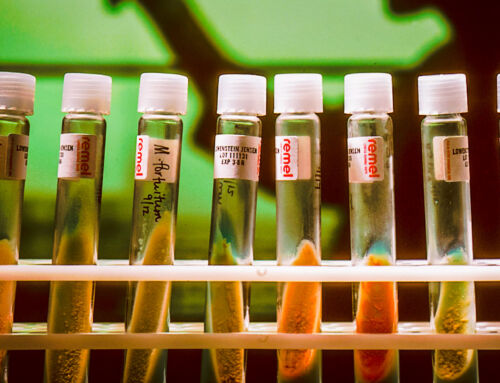View by Topic
Recent Articles
-
Congress Blocks California’s Gasoline Car BanSaturday, May 31st, 2025
-
EPA Will Keep Current Limits for “Forever Chemicals” in Drinking WaterSaturday, May 24th, 2025
-
Court Indefinitely Pauses SEC Climate Rule LitigationSaturday, May 17th, 2025
-
Maryland is About to Regulate Mold But is the Cart Before the HorseSaturday, May 10th, 2025
View by Month/Year
“Green Building Law Update” Headlines
Recent Articles & News from
Stuart Kaplow’s blog
at GreenBuildingLawUpdate.com
- Congress Blocks California’s Gasoline Car Ban: A Legal and Policy Analysis June 1, 2025
- EPA Will Keep Current Limits for “Forever Chemicals” in Drinking Water May 25, 2025
- Court Indefinitely Pauses SEC Climate Rule Litigation May 18, 2025
- Maryland is About to Regulate Mold: But is the Cart Before the Horse? May 11, 2025
Subscribe to the Green Building Law Update!
Stuart Kaplow brings his expertise and extensive experience to the table with his unique digital publication, "Green Building Law Update". Subscribers receive regular updates to keep them informed about important issues surrounding Environmental Law, Green Building & Real Estate Law, as well as the emerging demand for Environmental Social Governance (ESG).
Get fresh content through the lense of Stuart Kaplow's cutting-edge expertise, innovative commentary and insider perspective. Don't miss another issue! Subscribe below.

Greenhouse Gas Emission Disclosures in Real Estate Contracts and Beyond
As concerns about climate change move from mainstream society to businesses large and small, the significance of greenhouse gas emissions and specifically the move to decarbonize economies across the globe is receiving increased attention. In response, both voluntary and mandatory GHG emission disclosures in contracts have emerged worldwide, compelling a broad breadth of business sectors, particularly real estate, to integrate these considerations into their company practices and into their contract documents. In this blog post, we begin to explore how GHG emission disclosures are shaping contracts including influencing real estate sales, as well as the impacts across other sectors.
The Rise of GHG Emission Disclosures: Over the last several years, there has been a significant rise in voluntary GHG emission disclosure frameworks, from the Global Reporting Initiative to our firm’s own Net Plus GHG App. These initiatives have to date played a limited but important role in promoting transparency and accountability, as companies are increasingly finding it necessary to measure, disclose, and reduce their GHG emissions.
Mandatory Disclosure Requirements: Increasing numbers of jurisdictions across the United States are implementing mandatory GHG emission regulations. These regulations typically require companies, including real estate developers and property owners, to quantify and disclose their emissions often under the umbrella of building energy performance standards, which focus on the buildings’ energy efficiency or carbon footprint. An example of such a current draft regulation in Maryland is:
Disclosure of Building Benchmarking and Performance Standards Information.
Before a buyer signs a contract for the purchase of a covered building, the building owner selling the covered building must:
Disclose to the prospective buyer that the building is subject to requirements under this law;
Transfer the following records to the prospective buyer:
A copy of the complete benchmarking record from the benchmarking tool;
Documentation of data verification;
Documentation of any alternative compliance payments made to the Department; and
Any other records relevant to maintain compliance under this Subtitle.
Provide to the prospective buyer the following information:
Performance baseline; and
Interim and final performance standards.
The prospective buyer must indicate, by signing an addendum to the contract or a separate section of the contract printed in boldface type, that the seller has made the disclosures and provided the information required by this chapter.
Additionally, increasing numbers of landlords and tenants must exchange greenhouse gas emission data so that building owners can comply with building energy performance standards laws that require annual GHG emission reporting, something that requires modifications to many leases, commercial and residential, as we blogged about in Does Your Lease Need GHG Provisions?
Implications for Real Estate: Beyond provisions mandated by building energy performance standards, GHG emission disclosures are becoming a fundamental part of real estate transactions. In many states, prospective buyers and tenants now consider a property’s environmental performance and GHG credentials as essential criteria for their decisions (e.g., a buyer will consider its obligations to make improvements to comply with GHG reductions mandated by law in future years, for example replacing natural gas equipment with electric). As a result, disclosures are finding their way into contractual provisions for real estate sales and leases. These provisions can include requirements to disclose past and ongoing energy usage, energy efficiency audits, and even commitments to reduce emissions over time through capital improvements that involve replacing existing equipment with all electric.
Benefits for Buyers and Investors: For buyers and investors, integrating GHG emission disclosures into real estate contracts offers several benefits. Firstly, it provides a clear understanding of a property’s energy efficiency and GHG profile, allowing them to make informed decisions aligned with their sustainability goals and aims for profitability. Secondly, such disclosures enable better risk assessment, ensuring that properties are resilient against future regulatory changes and potential market disruptions related to energy and carbon pricing. Lastly, the inclusion of energy performance provisions in contracts may help incentivize property owners to invest in energy saving technologies and retrofits, leading to reduced operational costs and increased asset value.
Beyond Real Estate Broader Industry Impact: The influence of GHG emission disclosures extends far beyond the real estate sector because the vast majority of U.S. businesses operate in leased space. Industries such as manufacturing, transportation, and hospitality may also be subject to mandatory EPA large source disclosure requirements, but that does not carry with it any private contract disclosure. As a result, these disclosures shape contracts, and agreements across multiple sectors, impacting supply chain decisions, investment choices, and collaboration strategies.
Conclusion: GHG emission disclosures, both voluntary and mandatory, are a response to the new era of environmental consciousness in business. The real estate sector is already seeing building energy performance standards and other disclosures integrated into contracts of sale, leases, loan documents, and other agreements. With stakeholders becoming more attuned to the environmental impact of their decisions, these disclosures play a pivotal role in promoting sustainability, decarbonization, and aligning business practices with climate goals. Beyond real estate, the influence of GHG emission disclosures is extending to nearly all sectors, beginning to transform the way businesses operate and interact with the planet.
A live webinar “Greenwashing: How to Mitigate Your Risk” 30 talking points in 30 minutes, Tuesday, July 25 at 9 am ET presented by Stuart Kaplow and Nancy Hudes on behalf of ESG Legal Solutions, LLC. The webinar is complimentary, but you must register here.









